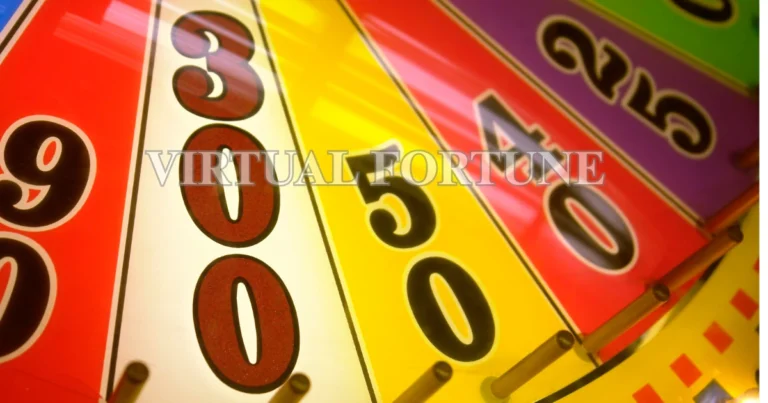Imagine having the power to generate perfectly random dice results instantly, without ever losing a die under the couch or debating whether that roll was fair. A dice generator transforms the ancient practice of chance into a modern, reliable digital experience that serves gamers, educators, probability enthusiasts, and decision-makers across the globe. Whether you're running an epic tabletop campaign, teaching statistical concepts, or simply need an unbiased way to make choices, understanding how dice generators work and which features matter most can revolutionize your approach to randomness.
The evolution from physical dice to sophisticated digital dice simulator technology represents more than mere convenience—it's about accessibility, fairness, and functionality that traditional dice simply cannot match. Modern dice generators eliminate human bias, provide instant documentation, support complex multi-die scenarios, and operate flawlessly across every device you own.
Understanding Dice Generator Technology and Random Number Generation
At its core, a dice generator is a sophisticated algorithm designed to produce truly random or pseudo-random numbers within specified ranges, mimicking the probabilistic outcomes of physical dice rolls. Unlike simple random number functions that might exhibit predictable patterns, advanced dice generators employ cryptographically secure random number generation (CSPRNG) techniques that ensure each outcome has an exactly equal probability of occurring, maintaining the statistical integrity essential for gaming, education, and scientific applications.
The mathematics behind a reliable dice simulator involves complex algorithms that transform computer-generated entropy into uniform distributions. When you click to generate a dice result, the system accesses multiple sources of randomness—from hardware timing variations to atmospheric noise data—to create outcomes that pass rigorous statistical tests for independence and uniformity. This technical foundation ensures that rolling a d20 roller one thousand times will produce results that match theoretical probability distributions within expected statistical margins.
Technical Insight: Professional dice generators utilize algorithms like Mersenne Twister, Linear Congruential Generators, or hardware-based random number generators that access quantum phenomena. The best implementations combine multiple entropy sources to create unpredictable sequences that satisfy even the strictest requirements for randomness in competitive gaming environments.
Key Features That Define Superior Dice Generators
Not all dice generators are created equal. The distinction between a basic random dice roller and a professional-grade tool lies in several critical features that affect user experience, reliability, and versatility. First and foremost, dice type support determines whether the generator can handle standard six-sided dice or extends to the full range of polyhedral dice used in role-playing games—d4, d6, d8, d10, d12, d20, and even d100 configurations.
Essential Features Checklist:
- Multiple dice type support (d4 through d100)
- Batch rolling capability to roll two dice or more simultaneously
- Automatic sum calculation for multiple dice rolls
- Comprehensive roll history with timestamps
- Mobile-responsive design for gaming on the go
- Visual animations that enhance engagement
- Statistical validation and fairness verification
- Customizable dice configurations for specialized needs
Advanced dice generators also provide modifier support, allowing users to add or subtract values from rolls—a common requirement in tabletop RPGs where characters might have bonuses or penalties affecting their dice results. The ability to save frequently-used configurations, such as "2d6+3" for a specific weapon attack, streamlines gameplay and reduces the time spent on repetitive setups.
The D20 Roller: Gateway to Tabletop Gaming
Among all dice types, the twenty-sided die holds a special place in gaming culture, and a quality d20 roller represents the most requested feature in dice generator applications. The d20 system, popularized by Dungeons & Dragons and adopted by numerous role-playing games, uses this iconic die for skill checks, attack rolls, and saving throws that determine success or failure in crucial moments. A dedicated d20 roller must deliver not just random numbers between 1 and 20, but also the dramatic anticipation that makes these rolls memorable.
Modern d20 roller implementations often include special highlighting for critical successes (rolling a natural 20) and critical failures (rolling a natural 1), recognizing that these outcomes carry special significance in most game systems. Some advanced tools even track d20 statistics over time, allowing players to verify the fairness of their virtual die and settle disputes about whether someone is genuinely "cursed" with bad rolls or simply experiencing normal statistical variance.
Practical Applications: From Gaming Tables to Classrooms
The versatility of a comprehensive dice generator extends far beyond entertainment, serving valuable functions in education, research, and everyday decision-making. Mathematics and statistics instructors leverage dice simulators to demonstrate probability theory concepts, allowing students to conduct thousands of virtual experiments in minutes that would take hours with physical dice. The ability to instantly generate large datasets of random results enables hands-on learning about probability distributions, expected values, and the law of large numbers.
Gaming Applications
RPGs, board games, miniature wargames, and competitive card games
Educational Uses
Probability lessons, statistics experiments, and mathematical modeling
Decision Making
Random selection, fair choices, and unbiased tie-breaking
Game Development
Playtesting mechanics, balancing systems, and validating probabilities
Game designers and developers use sophisticated dice simulator tools to test and balance game mechanics before committing to final designs. By simulating thousands of combat encounters, character progressions, or resource gathering scenarios, designers can identify mathematical problems, overpowered combinations, or unsatisfying probability curves that might not become apparent through limited playtesting with physical dice.
Multi-Dice Rolling Scenarios
Many gaming situations require rolling multiple dice simultaneously, and the efficiency of being able to roll two dice or more with a single click cannot be overstated. Whether you're calculating damage for a critical hit in D&D (which often involves rolling the weapon's damage dice twice), determining movement in a board game, or conducting a statistical experiment requiring multiple samples, batch rolling capabilities save significant time and reduce the possibility of human error in recording results.
The automatic summation feature in quality dice generators eliminates arithmetic mistakes that can disrupt game flow or invalidate experimental data. When a player needs to roll 8d6 for a fireball spell's damage, the system instantly provides both individual die results and the total damage value, maintaining game momentum and ensuring accuracy in high-stakes situations.
🎲 Looking for an advanced dice rolling solution? Explore our full-featured Dice Roller with 3D animations, multiple dice support, and comprehensive roll history tracking for the ultimate virtual dice experience.
Dice Generator vs Physical Dice: The Fairness Debate
A common question among traditional gamers concerns whether a digital random dice roller can truly match or exceed the fairness of physical dice. The surprising answer is that well-designed digital generators actually provide superior randomness compared to most physical dice. Manufacturing imperfections, material density variations, and wear patterns in physical dice create subtle biases that affect long-term probability distributions, even if these biases aren't noticeable in typical gaming sessions.
Physical dice can develop wear patterns on frequently rolled faces, particularly the corners and edges of numbers that land face-down most often. High-rolling faces may become slightly lighter as material wears away, subtly affecting the die's center of gravity. Quality casino dice are manufactured to extremely tight tolerances and are regularly replaced to maintain fairness, but consumer gaming dice rarely meet these standards. In contrast, a properly implemented dice simulator maintains perfect statistical fairness across billions of rolls without degradation.
Digital vs Physical: Objective Comparison
Advantages of Digital Dice Generators:
- Perfect mathematical fairness with no physical bias
- Impossible to lose or misplace
- Instant automatic calculation of multiple dice sums
- Complete roll history and statistical tracking
- No possibility of disputes about how a die landed
- Support for unusual die types (d3, d7, d100) without special hardware
- Silent operation suitable for noise-sensitive environments
Advantages of Physical Dice:
- Tangible, satisfying tactile experience
- No electronic device or power required
- Traditional aesthetic appeal and collecting value
- Psychological satisfaction of physical interaction
Advanced Features for Power Users
Professional-grade dice generator platforms offer advanced capabilities that casual users might not immediately recognize but which provide immense value in specific scenarios. Custom dice configuration allows users to define non-standard dice, such as a d3 (using values 1-3), percentage dice for percentile systems, or even weighted dice for game development testing purposes. This flexibility makes advanced generators invaluable for game designers experimenting with novel mechanics.
Macro support enables users to define complex roll sequences that execute with a single command. For example, a Pathfinder character might have an attack sequence that requires rolling 1d20 for the attack, then 2d6+5 for damage if the attack hits, followed by an additional 1d6 fire damage from a magical weapon. Advanced dice generators can store this entire sequence as a macro, executing all rolls simultaneously and presenting results in an organized format that speeds up gameplay dramatically.
Statistical Analysis and Verification
Serious gamers and researchers appreciate dice generators that provide statistical analysis of rolling history. These features might include chi-square tests to verify random distribution, graphical representations of result frequencies, and streak analysis to identify unusual patterns. While true randomness does include streaks and clusters that might seem "non-random" to human observers, statistical tools help users understand whether their results fall within expected probability ranges or indicate potential problems with the generator.
The ability to export roll history for external analysis serves academic and competitive gaming communities that require documentation and verification. Tournament organizers might mandate the use of specific random dice roller platforms with auditable logs to ensure fair play, while researchers conducting probability experiments need exportable data in standard formats for statistical software analysis.
Mobile Accessibility and Cross-Platform Performance
Modern dice generators must function flawlessly across the diverse ecosystem of devices people use daily. A truly effective dice simulator delivers identical functionality whether accessed from a desktop computer during a traditional gaming session, a tablet propped on the game table as a digital accessory, or a smartphone for quick on-the-go rolls during lunch break games. Responsive design ensures that touch targets remain appropriately sized, text remains legible, and animations run smoothly regardless of screen size or processing power.
Progressive Web App (PWA) technology enables dice generators to function offline after initial loading, ensuring that internet connectivity issues don't interrupt critical gaming moments. This capability proves particularly valuable during game sessions in basements with poor wireless signals or when traveling where reliable connectivity might be unavailable. The generator's state, including configured dice types and recent roll history, persists locally, providing seamless continuity even across interrupted connections.
Choosing the Right Dice Generator for Your Needs
Selecting an optimal dice generator requires evaluating your primary use cases against available features. Casual board gamers might prioritize simplicity and quick access, favoring generators with minimal configuration that deliver common dice types instantly. Tabletop RPG players typically require comprehensive polyhedral dice support, modifier handling, and possibly macro capabilities for frequently-used complex rolls. Educators need export functionality and statistical analysis to support classroom exercises and demonstrations.
User interface design significantly impacts long-term satisfaction with a dice generator. While feature-rich tools provide more capabilities, they can become overwhelming for users who only need basic functionality. The best generators employ progressive disclosure, presenting simple interfaces initially while making advanced features discoverable for users who need them. Clear visual feedback, satisfying animations, and intuitive controls contribute to an enjoyable experience that encourages continued use.
Frequently Asked Questions About Dice Generators
The Future of Digital Dice Generation
As technology advances, dice generator platforms continue evolving with enhanced features and capabilities. Virtual reality and augmented reality implementations promise immersive dice-rolling experiences that combine digital reliability with physical-like interactions. Blockchain-based provably fair systems offer cryptographic verification of random number generation, addressing skepticism about digital randomness through transparent, auditable algorithms that anyone can verify.
Artificial intelligence integration might enable dice generators to learn user preferences, automatically suggesting frequently-used configurations and adapting interfaces to individual usage patterns. Cloud synchronization will allow seamless transition between devices while maintaining roll history and custom settings. These advancements ensure that random dice roller technology will continue providing increasingly sophisticated solutions for gaming, education, and decision-making needs.
Disclaimer: This dice generator information is provided for educational, gaming, and informational purposes. While we discuss random number generation and probability, dice generators should be used according to the rules and preferences of your specific gaming group, educational institution, or organization. Digital dice tools are designed for entertainment and learning, not for gambling or high-stakes financial decisions.
The fairness and randomness of any dice simulator depend on proper implementation of random number generation algorithms. Users should verify that their chosen platform uses reputable methods and, when fairness is critical, select generators that provide statistical verification tools or auditable logs. Always confirm that digital dice are acceptable within your gaming community or competitive environment before relying on them for important rolls.
Statistical randomness means that unusual streaks, patterns, and clusters will naturally occur—these phenomena don't indicate unfairness but rather represent the expected behavior of truly random systems. For critical applications requiring certified random number generation, consult professional resources and industry-standard solutions. The information provided here represents general guidance and should not substitute for specific requirements in your particular use case.




